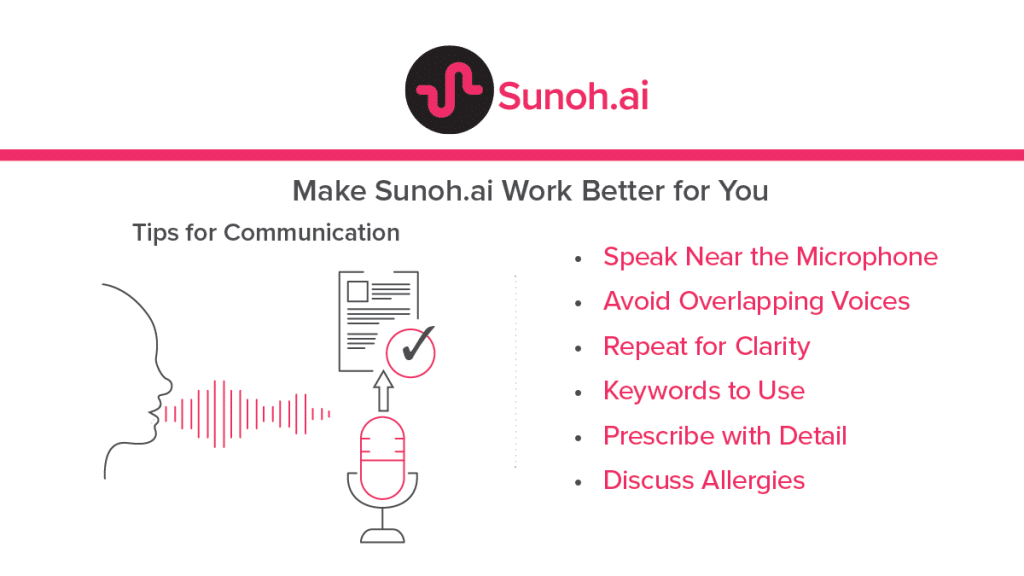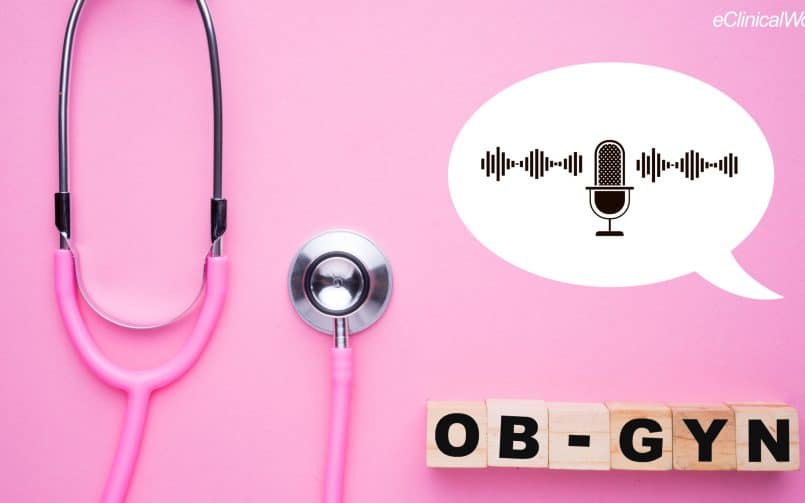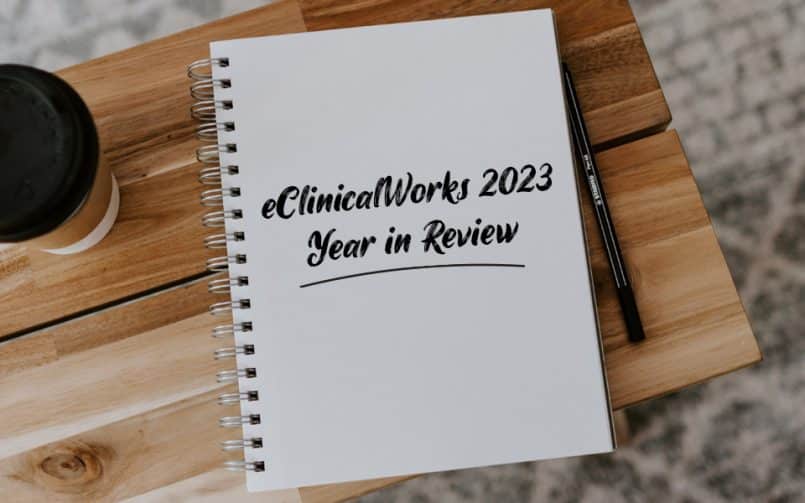How to Maximize Efficiency of an AI-Powered Medical Scribe
- 26 July 2024
- Blog
eClinicalWorks

The healthcare industry has always been a frontrunner in embracing innovations, and artificial intelligence (AI) is no exception. A striking example is the growing use of AI-powered medical scribes like Sunoh.ai, which are designed to automate clinical documentation and reduce the burden of administrative tasks. According to research, AI scribes save doctors an hour at the keyboard every day, thereby allowing healthcare providers more time to connect with their patients.
Remember, technology is a tool, and effective communication is the secret sauce that will help healthcare professionals get the best out of AI medical scribes. This will not only enhance productivity but also enhance patient satisfaction and overall healthcare delivery.
Here are some insightful communication tips to optimize your use of AI medical scribes:
1. Speak Clearly and Concisely
When you set up a voice signature, find a quiet place and be sure to speak slowly and clearly into the microphone so that the voice recognition works well. You can record using your eClinicalTouch app or browser app on your laptop; in addition, eClinicalMobile is great for recording.
2. Ensure Accurate Transcription
Avoiding overlapping voices ensures that Sunoh can capture each speaker’s contributions clearly in the transcript.
3. Specific Keywords
Use keywords like – diagnose, treatment, plan, order, and follow-up with your patients to discuss their symptoms and concerns.
4. Discuss Allergies
Discussing allergies in the conversation helps populate the allergy play button in the Sunoh Actions and Orders section so you can add and verify allergies.
5. Prescribe with Detail
When prescribing medication, state the medication’s name, dosage, and treatment plan in detail with keywords. For example, instead of saying “Take this for your blood pressure,” you can specify to the patient: “I am ordering lisinopril 10 mg once a day for your high blood pressure, also known as hypertension.”
6. Repeat for Clarity
After the patient shares their symptoms or medical history, repeat the key information back to them in a conversational summary fashion. For example: “So you’ve been experiencing headaches primarily in the mornings, accompanied by nausea, for the past two weeks. You mentioned taking Ibuprofen 400 mg three times a day for last two weeks did not help your headaches, so I am ordering Dramamine® 50 mg, 2 times a day.”

Consider factors such as efficiency, cost-effectiveness and, customizability, when selecting an AI scribe technology. Embracing AI-powered medical scribes is not just about adopting new technology; it’s about revolutionizing the way we deliver healthcare. AI scribe solutions like Sunoh.ai enhance patient care by enabling clinicians to spend more time with patients, reducing clinician burnout, and improving documentation accuracy, ultimately leading to better patient care and satisfaction.
Interested in learning more about how Sunoh.ai can help your practice? Schedule a demo today.





































